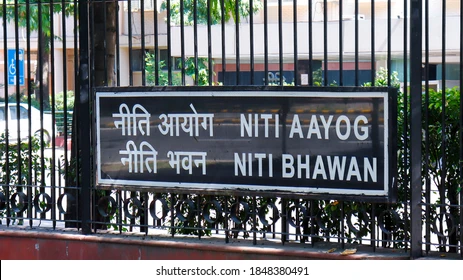NITI Aayog, though an improvement over the Planning Commission, has a mixed record of achievements and failures. Justify. (10 Marks, 150 Words)
NITI Aayog replaced the erstwhile Planning Commission in 2015 to usher in a new regime of strategic planning in India. It improves. upon the Planning Commission in the following ways:
- Introduced ‘Think-tank’ approach in the planning process.
- Encourages cooperative and competitive federalism between states — E.g., SDG dashboard
- Provides for bottom-up planning by involving states and even local governments Achievements of NITI Aayog.
- Strategic thinking— E.g., Reports on Doubling betters’ incomes by 2022, holding simultaneous elections in 2024.
- Making India ‘future-ready’ — E.g., 100 percent shift to electric vehicles by 2030, “One Nation, One Health System” policy by 2030, National programme on ‘Artificial Intelligence’ (AI)
- Breaks the silos in which ministries often operate and bring ideas from across the world.
- Land reforms in India — E.g., Model land leasing acts
- Revamping schemes with the help of states — E.g., Panel of chief ministers on rationalizing the Centrally Sponsored Schemes (CSS).
While the achievements are commendable, there are certain failures of NITI Aayog such as:
- Lack of independence from Government
- Lack of quality documents — E.g., Index on SDGs don’t explain real reasons for downfall or increase.
- Use of old and outdated data
- Friction with the Govt. — E.g., E-vehicles vis-a-vis Internal Combustion Engines
- Aayog has become too dependent on outside consultants and advisors in its decision making
Way Forward
India is facing unprecedented challenges like COVID mutations, technologies like blockchain, making renewable energy a successful substitute for thermal etc. NITI Aayog has to adapt and hire top talent across the spectrum with a reasonable level of independence. This will create a culture of innovation to power India for the next 50 years.






